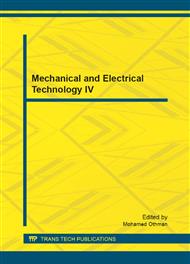p.2527
p.2531
p.2536
p.2541
p.2546
p.2551
p.2556
p.2562
p.2567
Sub-Index Derivation of Welding Health-Hazard Index (WHI) for Small and Medium Enterprises (SMEs) in Malaysia
Abstract:
Malaysia is a developing nation and the manufacturing sector is the major contributor to the Malaysian economy. In the year 2009, Small and Medium Enterprises (SMEs) contribute to 28,840 establishments which represented 94.2 percent of the total establishments in the manufacturing sector in Malaysia. Welding is a common industrial process in manufacturing sector that has both acute and long term chronic hazards mainly from the inhalable welding fumes. Welding fumes assessment in SMEs welding workplace is essential in order to ensure the minimum level of exposure is maintained as required by the prevailing standards. However, providing concentration or emission information alone is insufficient and meaningless to the workers and company management. There is an urgent need to develop an index which served as a ranking tool in comparing environmental condition at different location and to simplify complex health hazard issues of welding fumes that can be comprehended easily by the workers and company management. Preliminary ideas on the derivation of the sub-index from rating of health effect, mixture hazard, doses and weightage of metal fumes element were outlined in this paper. At the end of this paper, future works regarding aggregation factor and verification of the index were also discussed.
Info:
Periodical:
Pages:
2546-2550
Citation:
Online since:
November 2012
Keywords:
Price:
Сopyright:
© 2012 Trans Tech Publications Ltd. All Rights Reserved
Share:
Citation:


